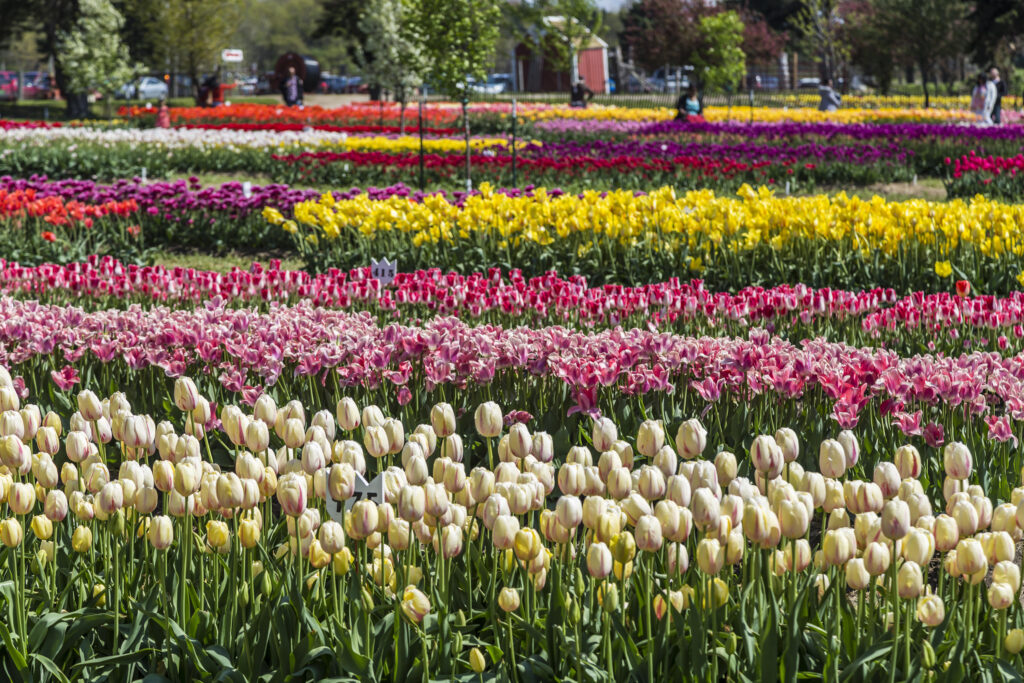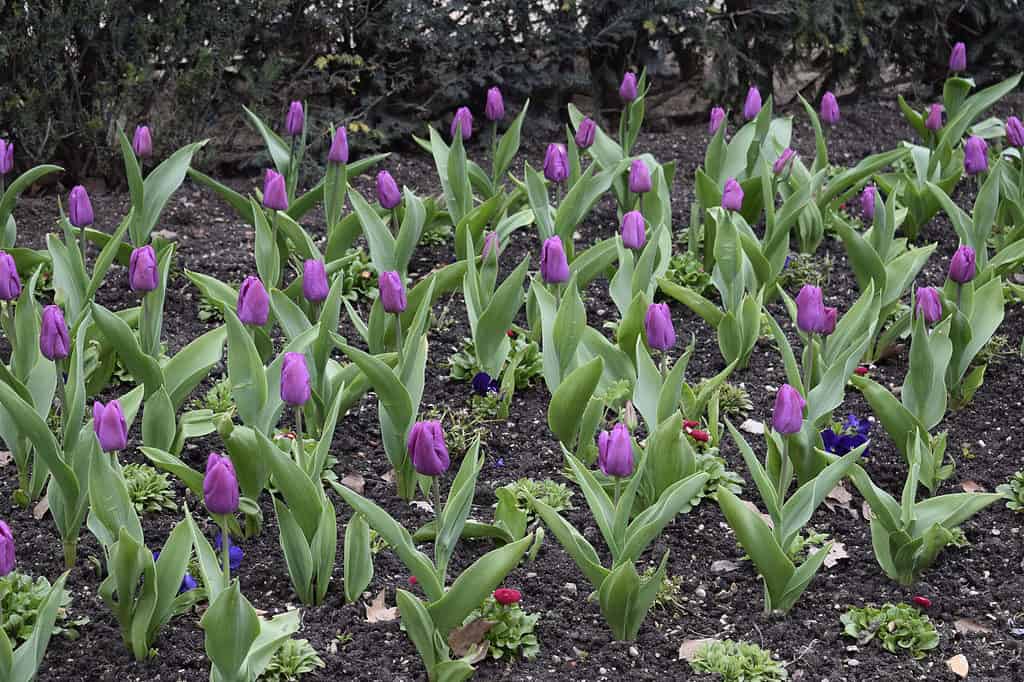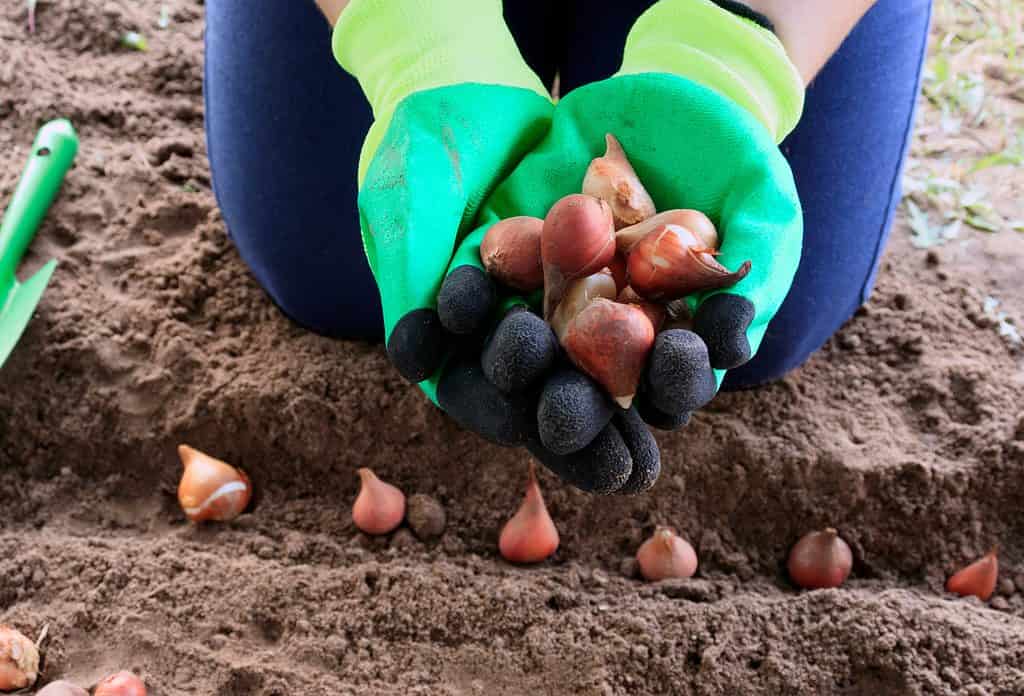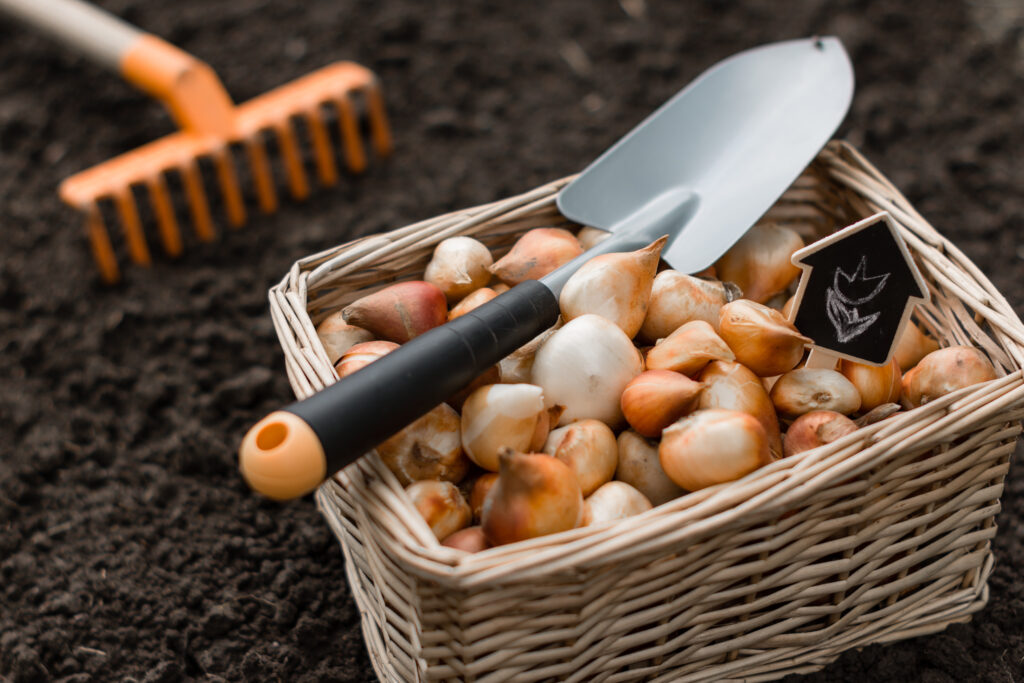Tulips are a versatile, colorful bloom that captures the essence of spring. These lovely flowers are easy to plant and care for, making them a favorite for beginner gardeners.
In this article, we’ll cover how to care for tulips, including best planting practices and preparing them for the winter season.

Tulips are a popular spring-blooming flower belonging to the genus
Tulipa, which is part of the
Liliaceaefamily.
©iStock.com/ShriramPatki
How to Care for Tulips: Tulip 101
Tulips are a popular spring-blooming flower belonging to the genus Tulipa, which is part of the Liliaceae family. Other members of the Liliaceae family include lilies, onions, and garlic. There are over 3000 registered varieties of tulips and over 130 color variations to choose from.
Contrary to popular belief, these beautiful blooms are native to central Asia. They were later introduced to Europe in the 16th century, quickly becoming a symbol of wealth and status. They have an interesting history, with a period of time known as “Tulip Mania” in the 17th century. During this period, tulips were highly sought after and considered more romantic than roses.
Tulips are herbaceous perennials, meaning they die back to the ground each year but will grow back again the following spring.
Tulips are the national flower of the Netherlands and are a popular tourist attraction at the Keukenhof Gardens, where over 7 million bulbs are planted yearly. Many Westerners consider tulips a symbol of spring and associate them with Easter, though they’re historically associated with deep, unconditional love.
How to Care for Tulips: Keeping this Plant Happy
Caring for outdoor tulips is relatively easy. You can grow these blooms in USDA zones 3-8 to add a pop of color to your garden each spring.

Tulips love nutrient-rich soil with plenty of organic matter.
©iStock.com/Wirestock
Tulip Soil Needs
Tulips love nutrient-rich soil with plenty of organic matter. Prepare the planting area by removing rocks and debris and tilling the soil. Mix in some compost or manure to improve the soil’s nutrient content.
Tulips also need well-draining, slightly acidic soil, ideally pH 6-7. You can test the soil with a meter or use the old farmer’s trick “pantry test” trick.
Put some soil in two separate bowls. Moisten the soil in one bowl with a bit of water and add baking soda. In the other bowl, add vinegar. If the vinegar bowl fizzes, your soil is alkaline. If the baking soda bowl fizzes, it’s acidic. In the event neither bowl reacts, your soil is neutral.
Tulip Light Needs
Tulips prefer full sunlight for optimal growth. They can grow in partial shade, but six or more hours of full sun is ideal for big, bold blooms.
Plant your tulips in a South-facing garden for best results. If this placement isn’t possible, West-facing gardens with full afternoon sun exposure are the next best option.
Tulip Watering Needs
Tulips require minimal watering to grow and thrive. If you live in an area that gets plenty of rain, you may not have to water them at all after planting.
Give the ground a good soaking when you plant your bulbs. Give them a splash of water during weeks it doesn’t rain, starting in the spring. It’s better to underwater than overwater these blooms, as they’re prone to root rot.
Tulip Fertilizer Needs
If your soil is rich in organic content, you won’t need to fertilize your tulips. However, you can lightly fertilize the area around your tulips during the spring with balanced outdoor plant food.
Tulip bulbs are dormant in the spring as nutrients are redirected to the blooms. However, light springtime fertilization can promote additional root growth in the fall. You can also add a light fertilizer when planting the bulbs during the dormant season.

Sprouting tulips are vulnerable to common garden pests, including aphids.
Common Tulip Pests
Sprouting tulips are vulnerable to common garden pests, including aphids, caterpillars, and slugs. They also attract rabbits, deer, mice, and voles looking for a snack in rural areas. A strong blast of water usually gets rid of bugs, while organic interventions like cayenne pepper, fencing, and proactive weeding and debris removal help deter furry visitors.
The most pervasive pests that impact tulips are bulb mites and bulb flies. These insects munch on the bulbs below the ground. They’re difficult to eradicate. However, before planting, you can prevent infestations by inspecting your bulbs for damage — such as soft spots or holes. You can also purchase hot water-treated bulbs, which are soaked in fungicide, disinfectant, and hot water before being sold.
How and When to Plant Tulip Bulbs
Tulips should generally be planted in the fall, 4-6 weeks before the ground freezes. This provides ample time for vernalization — prolonged cold exposure to prepare for blooming.

Tulips should generally be planted in the fall, 4-6 weeks before the ground freezes.
©Natallia Ustsinava/Shutterstock.com
Here’s how to plant and care for your tulips when the time arrives:
- Choose a planting location — Tulips prefer well-drained soil and a location with full to partial sun. Avoid planting in areas that are prone to standing water.
- Prepare the soil — Before planting, loosen the soil to a depth of at least 12 inches and remove any weeds or debris. Add compost or manure to improve soil fertility.
- Dig the holes — Using a trowel or bulb planter, dig holes about 6-8 inches deep and 3-6 inches apart.
- Inspect the bulbs — Look over each bulb for signs of rotting or damage. Discard damaged bulbs.
- Plant the bulbs — Place each bulb with the pointed end facing up in the bottom of the hole, and cover with soil. Firm the soil gently to eliminate air pockets.
- Water the bulbs — Water the bulbs immediately after planting to help settle the soil around them.
- Add mulch — Cover the planting area with a layer of mulch to help retain moisture, regulate soil temperature, and suppress weed growth. Use a light layer of straw, shredded leaves, or grass clippings.
- Care for the bulbs — Water the tulips during drought periods starting in the spring. Remove dead leaves and debris from the garden, and monitor for pests.
- Enjoy the blooms — Tulips typically bloom in the spring, producing colorful, showy flowers. After the blooms have faded, allow the foliage to die back naturally before removing it. Do not remove any leaves or blooms before all the color is gone.
How to Care for Tulips in Winter
Many gardeners wonder if they should dig up their bulbs and store them for winter. In most cases, tulips prefer to be left where they are. Premature digging can also kill the bulbs.
Tulips can stay underground for the winter unless there are signs of overcrowding. If you notice too many blooms, smaller blooms than usual, or non-blooming stalks, consider digging up a few bulbs and transplanting them in the fall.

If you purchase tulip bulbs during the spring or summer, you can store them or cure them until the fall.
©Jurga Jot/Shutterstock.com
Storing Tulip Bulbs
If you purchase tulip bulbs during the spring or summer, you can store them or cure them until the fall.
Fill a container with dirt and “plant” your bulbs, not allowing them to touch one another. Do not water the bulbs. Cover and place the box in the fridge or a dark, cool area until the fall.
Growing Tulips Indoors
You can grow tulips indoors through a process called “forcing.” Keep your bulbs stored in a cool, dry place over the winter to emulate vernalization. In the spring, transfer the bulbs to a pot with drainage, water the soil, and place them in a sunny window. Indoor tulips require weekly watering.
After they’re blooming period, let the foliage die away naturally, then deadhead and move the bulbs back to their winter storage space.

You can grow tulips indoors through a process called “forcing.”
©sasimoto/Shutterstock.com
Can I Plant Tulips in Spring?
You can plant tulips in the spring if you plan in advance. If you want them to bloom this season, the bulbs will need ample time to chill before planting.
“Plant” your bulbs in a container using the storage method above. Place this container in the fridge for 12 weeks. After the chilling period, you can transfer the bulbs to the ground outdoors and enjoy their blooms with the rest of your garden.
The photo featured at the top of this post is © pr2is/Shutterstock.com
Thank you for reading! Have some feedback for us? Contact the AZ Animals editorial team.







